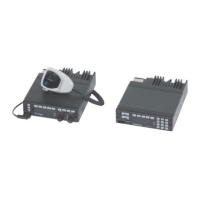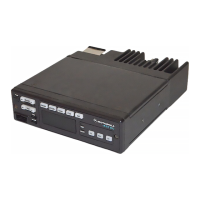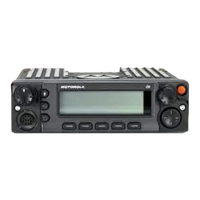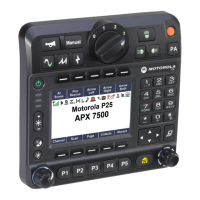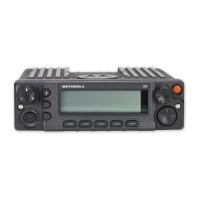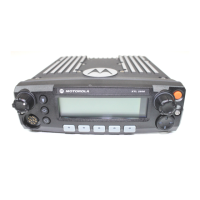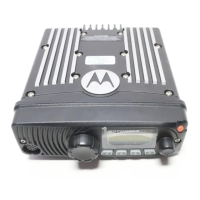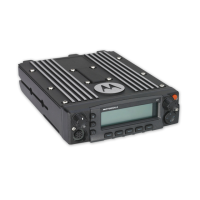Theory of Operation: Tone Remote Control Board
6881086C22-B 23
Spectra/Spectra Plus radio user’s guide). S101-3 determines the method in
which the emergency is triggered.
SPKR_UNMUTE is available at Accessory Connector 2 pin 25 as an output to
provide an indication to accessories when the radio is receiving valid audio and
the speaker is unmuted. This signal is configurable for either active-high or
active-low operation using jumper J15. See Table 2 on page 9. When
configured for active-high, the emitter of Q101 is used to determine the state
of the speaker. (If the voltage of the emitter of Q101 is high, the speaker is
unmuted; if the voltage here is low, the speaker is muted.) Similarly, if active-
low is selected, the collector of Q102 is used to determine the state of the
speaker. (If the voltage at the collector of Q102 is high, the speaker is muted;
if the voltage here is low, the speaker is unmuted.) Typically, this signal is
known as COR (Carrier-Operated Relay).
Tone Remote Control
Board
NOTE: For the ASTRO Spectra/Spectra Plus Consolette to work
properly with the Tone Remote Control (TRC) option, several
codeplug parameters must be properly set using the ASTRO
mobile CPS. The TRC option must be enabled, and “HUB
defeats PL” must be selected. For instructions on setting
these parameters, see the ASTRO mobile CPS manual.
General Description Tone Remote Control (TRC) allows control of a Consolette from a remote
location using a pair of wires (wireline) which need not have DC continuity.
Control is accomplished using a tone remote control console that sends a
sequence of control tones that are interpreted by the Consolette. A Consolette
function normally corresponds to a function tone (FT) of a predefined
frequency. All function tones must be preceded by a high-level guard tone
(HLGT—usually 2175 Hz), which alerts the Consolette for a sequence of one
or more function tones. On two-wire operation, receiver audio is muted when
HLGT is detected, so there will be no interfering audio signals on the wireline
when the function tones are being received. Upon receipt of the function
tone(s), the appropriate functions (are) executed by the Consolette. An
example might be the monitor function, which disables receiver PL; the monitor
function tone frequency is usually designated 2050 Hz. See Table 12 on
page 24 for function tone descriptions.
Receiver audio is gated through the radio and passed through a guard tone
notch filter on the TRC board. This processed audio is then filtered and applied
to the phone line. Transmit audio passes through a sample-and-hold AGC
circuit, a guard tone notch filter, and then to the radio to transmit. Audio coming
from the wireline is also passed through a bandpass filter that is centered at
the guard tone frequency. This audio is then routed to the microprocessor
(U123) to be decoded.
Figure 8 illustrates the sequence of tones involved in a line push-to-talk (LPTT)
function. In such a case, the function tone must be defined as a transmit
function on a certain mode (that is, 1950 Hz is usually defined as the function
tone for keying on mode 1). If an LPTT function tone is sent, the remote control
console follows the function tone with a continuous low-level guard tone
(LLGT), which is at the same frequency as the HLGT, but at an amplitude 30 dB
lower. LLGT is a pilot tone that is present, along with the transmitted audio, for
the duration of the transmission. At the end of the transmission, the Consolette
dekeys after the LLGT is no longer detected.
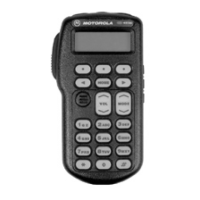
